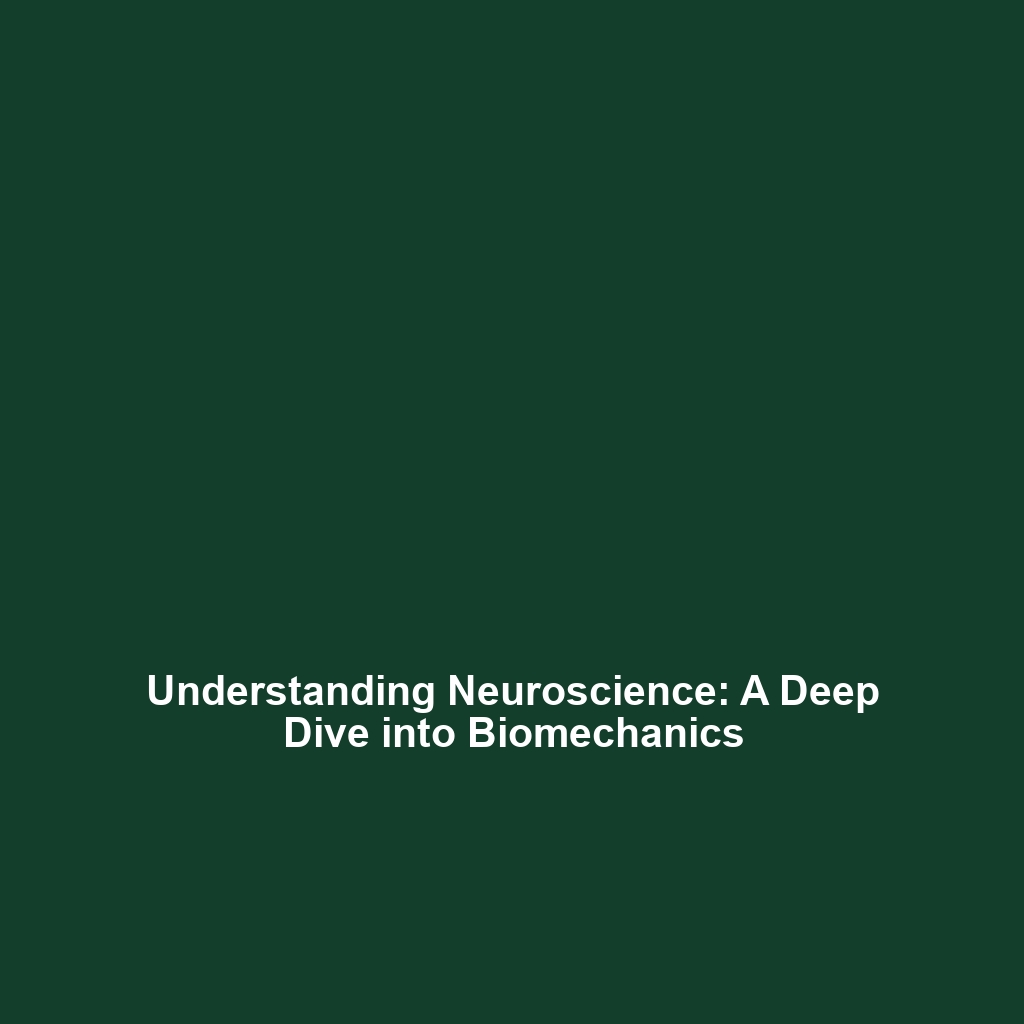What is Neuroplasticity?
Introduction
Neuroplasticity, often referred to as brain plasticity, is the remarkable ability of the nervous system to adapt and reorganize itself throughout an individual’s life. This phenomenon plays a significant role in biomechanics, as it impacts physical rehabilitation, motor learning, and overall movement dynamics. Understanding neuroplasticity not only enhances our grasp of human physiology but also opens doors for innovative therapeutic approaches in biomechanics. In this article, we will delve into the fundamental concepts of neuroplasticity and its implications within the realm of biomechanics.
Key Concepts of Neuroplasticity
Neuroplasticity encompasses several major concepts and principles:
- Synaptic Plasticity: This refers to the ability of synapses (the connections between neurons) to strengthen or weaken over time. Both long-term potentiation (LTP) and long-term depression (LTD) are vital mechanisms that underlie learning and memory.
- Functional Plasticity: The brain’s capacity to reassign functions from damaged areas to healthy ones is crucial for recovery after injuries.
- Structural Plasticity: This involves the brain’s ability to physically alter its structure by changing neural connections based on experience.
In biomechanics, these principles are fundamental for understanding how the nervous system influences movement patterns and motor control, highlighting the interplay between neuroplasticity and physical performance.
Applications and Real-World Uses
Neuroplasticity has numerous real-world applications, especially in biomechanics:
- Rehabilitation Therapy: Techniques such as constraint-induced movement therapy take advantage of neuroplasticity to recover lost motor functions after strokes or injuries.
- Motor Skill Acquisition: Understanding how neuroplasticity works allows for the development of training protocols that enhance motor learning in athletes.
- Ergonomic Device Design: Developers can design aids that complement the brain’s adaptive capabilities, thereby improving functional outcomes for individuals with movement disorders.
These applications of neuroplasticity in biomechanics demonstrate its crucial role in enhancing rehabilitation and performance optimization.
Current Challenges in Neuroplasticity Research
While the study of neuroplasticity has advanced significantly, several challenges remain:
- Individual Variability: Responses to neuroplastic interventions can vary widely among individuals, complicating treatment protocols.
- Measurement Difficulties: Assessing the effectiveness of neuroplasticity-based therapies can be challenging, requiring robust metrics and methodologies.
- Lack of Understanding: Despite advances, the precise mechanisms governing neuroplasticity are not entirely understood, leading to gaps in effective clinical applications.
Addressing these challenges is essential for the continued growth of neuroplasticity research within biomechanics.
Future Research and Innovations
The future of neuroplasticity research in biomechanics looks promising with several exciting avenues being explored:
- Neurotechnology: Innovations such as brain-computer interfaces (BCIs) offer new ways to harness neuroplasticity for rehabilitation.
- Virtual Reality (VR) Exergaming: Using immersive environments to promote motor learning and engagement can lead to enhanced neuroplastic changes.
- Biofeedback Mechanisms: Advanced biofeedback technologies can provide real-time data, enabling targeted neuroplasticity interventions.
These developments highlight the ongoing integration of technology and neuroscience in biomechanics.
Conclusion
In summary, neuroplasticity is a fundamental concept in understanding human biomechanics and its applications. As research progresses, we anticipate significant breakthroughs that will enhance rehabilitation strategies and athletic performance. For further reading, explore our articles on rehabilitation techniques and motor learning principles. Stay informed about the latest advancements in biomechanics and neuroplasticity.

